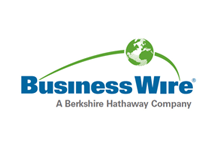Worldwide Fatty Alcohols Industry to 2030 - Featuring Emery Oleochemicals, BASF, Kuala Lumpur Kepong and Oleon Among Others - ResearchAndMarkets.com
The "Fatty Alcohols Market Size, Market Share, Application Analysis, Regional Outlook, Growth Trends, Key Players, Competitive Strategies and Forecasts, 2022 To 2030" report has been added to ResearchAndMarkets.com's offering.
The fatty alcohol market is expected to cross the market revenues of US $10 billion by 2030 growing at a CAGR of 5.5% during the forecast period of 2022 to 2030.
Increasing Demand for Eco-Friendly Solution Boosting the Market for Fatty Alcohols
An increase in customers' awareness of environmental issues is pushing them to purchase products that are less harmful to the environment. These kinds of considerations are pushing chemical firms toward the utilisation of bio-based raw materials in the production of their goods.
In comparison to alternatives based on petrochemicals, fatty alcohols derived from oleo-based feedstock are not only recyclable but also less hazardous to human health, making them the material of choice for the production of cosmetics and other personal care goods. As a result of this trend toward biodegradable and environmentally friendly cosmetic products, the demand for fatty alcohols is expected to continue to increase over the course of the forthcoming period.
Rising Demand for Surfactants Driving the Market Growth.
It is well acknowledged that the rising demand for surfactants in personal care products such as conditioners, lipsticks, shower gel, and antiperspirant is a crucial factor that has the potential to greatly expand the market over the course of the forthcoming time. It is anticipated that the cost-effectiveness and inherent biodegradability of these products would drive growth in the natural fatty alcohol market over the course of the year under study.
Volatility of Raw Material Prices Impacting the Market Adversely
The fluctuating prices of raw material, which is essential for the production of Fatty Alcohol, are the primary factor that is restraining the market. This is because the production of fatty alcohol is impacted, and as a result, so is the price of fatty alcohol in accordance with the various requirements of the various market segments. Palm oil, rapeseed oil, and PK oil are the three types of oils that are utilised in the manufacturing of fatty alcohol.
Increased Cost of Production Remains High Making the Market Less Lucrative for Earning Margins
It is anticipated that the high costs that are involved with the manufacturing process will be a significant element that can function as a barrier to the expansion of the industry during the term under consideration. Demand for natural fatty alcohols is expected to increase during the forecast period due to a number of factors, including volatile prices and stringent regulations imposed by a number of government agencies in response to the negative impact that fatty alcohols derived from petrochemicals have had on the environment.
Increasing Uptake of Liquid Detergent over Powder Detergents Opens an Avenue of Opportunity
The rise in per capita income in emerging economies has resulted in an enhanced standard of living, which in turn has led to a shift in the behaviour of consumers and improvements in their standard of living. The modern consumer is on the lookout for high-quality goods that make their work simpler, much in the same way as liquid detergents make the routine tasks of cleaning and maintaining sanitation in the home more straightforward.
Asia Remains as the Global Leader
The Asia-Pacific region emerged as the largest market for the fatty alcohol market in 2021, with a market share of approximately 38% in 2021 and it is anticipated that it would maintain its preeminent position during the period of forecasting. This is the case as a result of a growth in per capita income in growing economies such as India, China, and other Asia countries. This has caused a change in their lifestyle, and as a result, people are looking for quality products that are also easy to use.
Key questions answered in this report
- What are the key micro and macro environmental factors that are impacting the growth of Fatty Alcohols market?
- What are the key investment pockets with respect to product segments and geographies currently and during the forecast period?
- Estimated forecast and market projections up to 2030.
- Which segment accounts for the fastest CAGR during the forecast period?
- Which market segment holds a larger market share and why?
- Are low and middle-income economies investing in the Fatty Alcohols market?
- Which is the largest regional market for Fatty Alcohols market?
- What are the market trends and dynamics in emerging markets such as Asia Pacific, Latin America, and Middle East & Africa?
- Which are the key trends driving Fatty Alcohols market growth?
- Who are the key competitors and what are their key strategies to enhance their market presence in the Fatty Alcohols market worldwide?
Companies Mentioned
- Ecogreen Oleochemicals
- Emery Oleochemicals
- BASF
- Kuala Lumpur Kepong (KLK)
- Oleon
- Sasol
- PT Muslim Mas
- Kao Chemicals
Market Segmentation
Product
- C6-C10 Fatty Alcohols
- C11-C14 Fatty Alcohols
- C15-C22 Fatty Alcohols
Application
- Soaps & Detergents
- Personal Care
- Lubricants
- Amines
- Others
Source
- Tropical Oils
- Animal Fats
- Soft Oils
- Others
Region Segment (2020 - 2030; US$ Million)
- North America
- U.S.
- Canada
- Rest of North America
- UK and European Union
- UK
- Germany
- Spain
- Italy
- France
- Rest of Europe
- Asia Pacific
- China
- Japan
- India
- Australia
- South Korea
- Rest of Asia Pacific
- Latin America
- Brazil
- Mexico
- Rest of Latin America
- Middle East and Africa
- GCC
- Africa
- Rest of Middle East and Africa
For more information about this report visit https://www.researchandmarkets.com/r/5t2pm
View source version on businesswire.com: https://www.businesswire.com/news/home/20221025005578/en/




